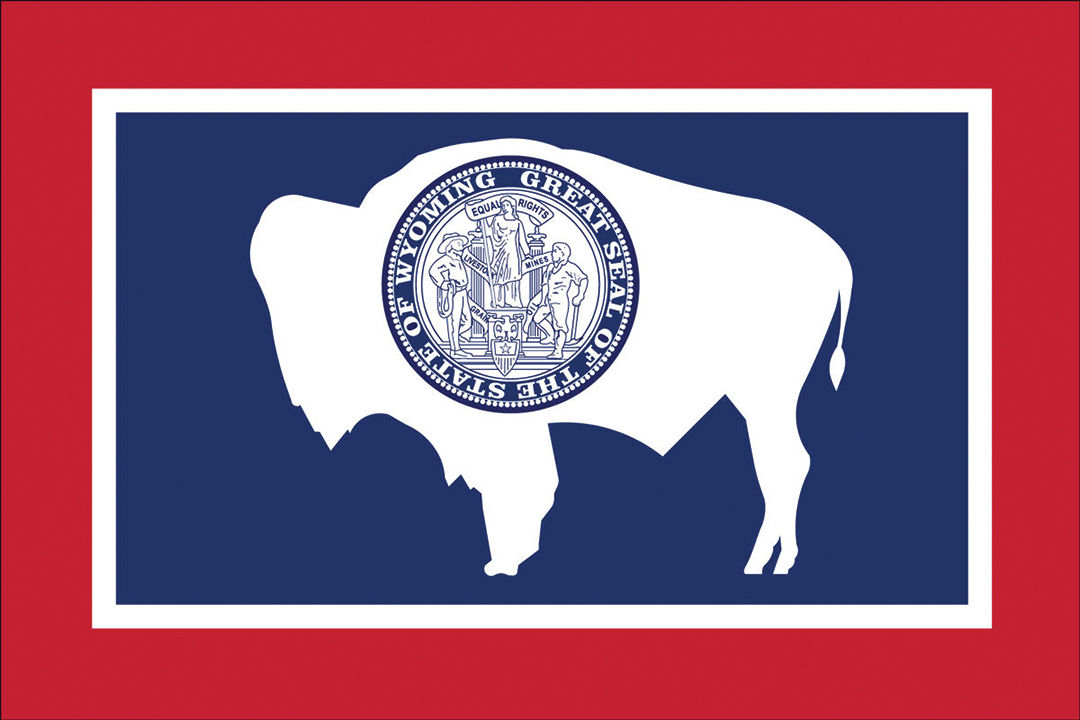By Victoria Eavis
Casper Star-Tribune
Via- Wyoming News Exchange
CASPER —Both the Wyoming House and Senate have passed redistricting plans, but as usual, the process has been anything but smooth.
The Senate adopted a redistricting plan Thursday that risks a court challenge and is drastically different from what the House of Representatives agreed on earlier in the budget session.
Lawmakers have been working for months on redrawing the state’s legislative districts in light of population changes that occurred over the past decade. The process has been a challenge, especially as lawmakers try to reconcile population growth in Wyoming’s larger cities with the state’s shrinking small towns.
In the Senate’s map, the Bighorn Basin is slightly “out of deviation,” meaning that the ratio of constituents to representatives is not proportional enough. If districts are out of deviation, they risk being in violation of the 14th Amendment and the “one man, one vote” concept. Courts have held that if districts are within 10% deviation, they comply with the 14th Amendment.
Currently, the Senate map is roughly 11.25% out of deviation and has 90 lawmakers. The House’s map that was delivered to the Senate was dramatically different. So what happened?
Sen. Bo Biteman, R-Ranchester, brought an amendment Tuesday that more or less brought back a layout that the Joint Corporations Committee tabled in February. But there is one major difference between then and now: The committee had the basin in deviation, while Biteman’s plan does not.
Biteman’s amendment also reduced the number of lawmakers from 93 back down to 90.
Another amendment brought in the Senate Thursday by Sen. Bill Landen, R-Casper, pushed the basin farther out of deviation by a mere 142 people. With the passage of that amendment, however, a community of interest was made whole again by putting some northwest Natrona County people back into a Natrona County district. It also solved what’s called a “split ballot,” which occurs when people go to the polls and have to vote on two different ballots because municipal and legislative district lines cross over. County clerks have repeatedly voiced their opposition to splits because it confuses voters.
The new maps that the House and Senate passed come after the Joint Corporations, Elections and Political Subdivisions Committee worked on a reapportionment plan over the past few months, all the while hearing from county clerks, residents and other lawmakers. The map that the committee ultimately sponsored was changed dramatically in both chambers. For one, the committee proposed a map that would increase the Legislature from 90 to 93 lawmakers. That provision was later removed in the Senate
Wyoming’s county clerks said they were not looped in on the major Senate amendments and are not keen on them.
“They’re really disappointed,” said Mary Lankford, a lobbyist for the Wyoming County Clerks Association and the Sublette County clerk for 32 years. “They worked really hard during the interim with the public, and in two days all their work has been ignored and gone.”The association was on board with the 93-lawmaker plan because it met all the redistricting principles and was within deviation. Lankford does not expect a map with the basin out of deviation to pass the courts if the state is sued.
The final Senate map passed easily with 20 in favor and 10 against.
“I do acknowledge that [the possibility of being sued] may exist, but I feel pretty strongly about what the Senate did,” Landen said. “We’re more concerned with communities of interest, which I think more reflects the values of Wyoming. What the Senate has landed on is: We believe that communities of interest are more important.” Those opposed to the 93-legislator plans are wary of growing government and concerned about the cost of doing so.
Sen. Ogden Driskill, R-Devil’s Tower, chairman of the corporations committee, calls that cost a “red herring,” making the point that a special session to sort out redistricting disagreements would cost far more than adding three lawmakers over multiple years.
The Senate’s map is going back to the House for a vote, where it is more than likely to get voted down, said Rep. Dan Zwontizer, R-Cheyenne, co-chairman of the legislative committee responsible for redistricting.
That vote will trigger a conference committee — three representatives and three senators — to address the major differences in the two chambers’ maps. The map that the committee ends up with will again be put to a vote in both bodies. A conference committee did not occur in the last two redistricting efforts.
Before the bodies have a chance to vote, lawmakers will likely convene a caucus to get a pulse on how many votes the map options have, Zwonitzer said.
“They likely won’t bring something that won’t pass,” he added.
If the conference committee can’t come to an agreement, Wyoming runs the risk of having the courts draw the map, the prospect of which also concerns people.
“They’ll do a cookie cutter thing and say, ‘Here it is ,’” Lankford said. “There won’t be any community of interest. No consideration for any of that.”
A special session would be called if the joint committee can’t offer a bill that can pass both the House and the Senate and the Legislature runs out of time in this budget session to work.
As lawmakers go into a conference committee, they have to wrestle with two plans, one of which is over 11% out of deviation. If the Legislature ultimately moves forward with a map out of deviation, the state is opening the door to a lawsuit, which has happened before. Wyoming lost a lawsuit over the plan the state put forward in 1990 because the House and the Senate were astronomically out of deviation: 83% in the House and 58% in the Senate.
That said, the U.S. Supreme Court also upheld a Virginia plan as constitutional that was 16.4% out of deviation because of the “specific facts of the case,” the Wyoming Legislative Service Office wrote in a memo.
The Bighorn Basin is a unique circumstance. It causes issues because of its geography (it’s mountainous and hard to access in the winter as roads get snowed in) and because it has a community of interest. The basin has long had a farming community that some lawmakers say would not make sense to split up or add a large group of people from outside the community just to satisfy the deviation requirements.
“The Bighorn Basin is tough every year,” said Pete Illoway, the chairman of the corporations committee last time the Legislature performed redistricting.
Many lawmakers are willing to run the risk of a lawsuit, while other lawmakers disagree that Wyoming will prevail. The 14th Amendment requires a state to make an “honest and good faith effort” to draw districts as equally as is practical.
“I like our chances of defending what Wyoming represents,” Landen said.
On Tuesday, after Biteman brought his major amendment, there was chatter on and off the floor that his map was drawn to prioritize maintaining lawmakers’ seats over respecting population changes. “This plan ensures the greater likelihood of us to come back. Its self serving,” Sen. Tara Nethercott, R-Cheyenne, said to the body. “It works. We know it works.”
Sens. Cale Case, R-Lander, Mike Gierau, D-Jackson, and Driskill all told the Star-Tribune that they believed the driving force behind this map was electability. Biteman denied that had anything to do with his draft.
“That’s absolute B.S.” Biteman said. “There’s no motivations like that period.”
The senators’ concerns aren’t without cause. There have been public conversations about wanting to maintain seats, and there was a previous map drawn that split Cheyenne’s Latino community unfavorably in order to prevent two sitting lawmakers from running against one another, the Star-Tribune reported earlier.
The need for a conference committee is reflective of how redistricting has gone so far. The corporations committee aimed to be done with the process by Dec. 1, but the panel ultimately worked up until the Friday before the budget session convened in mid-February because the committee and the public could not come to an agreement.







